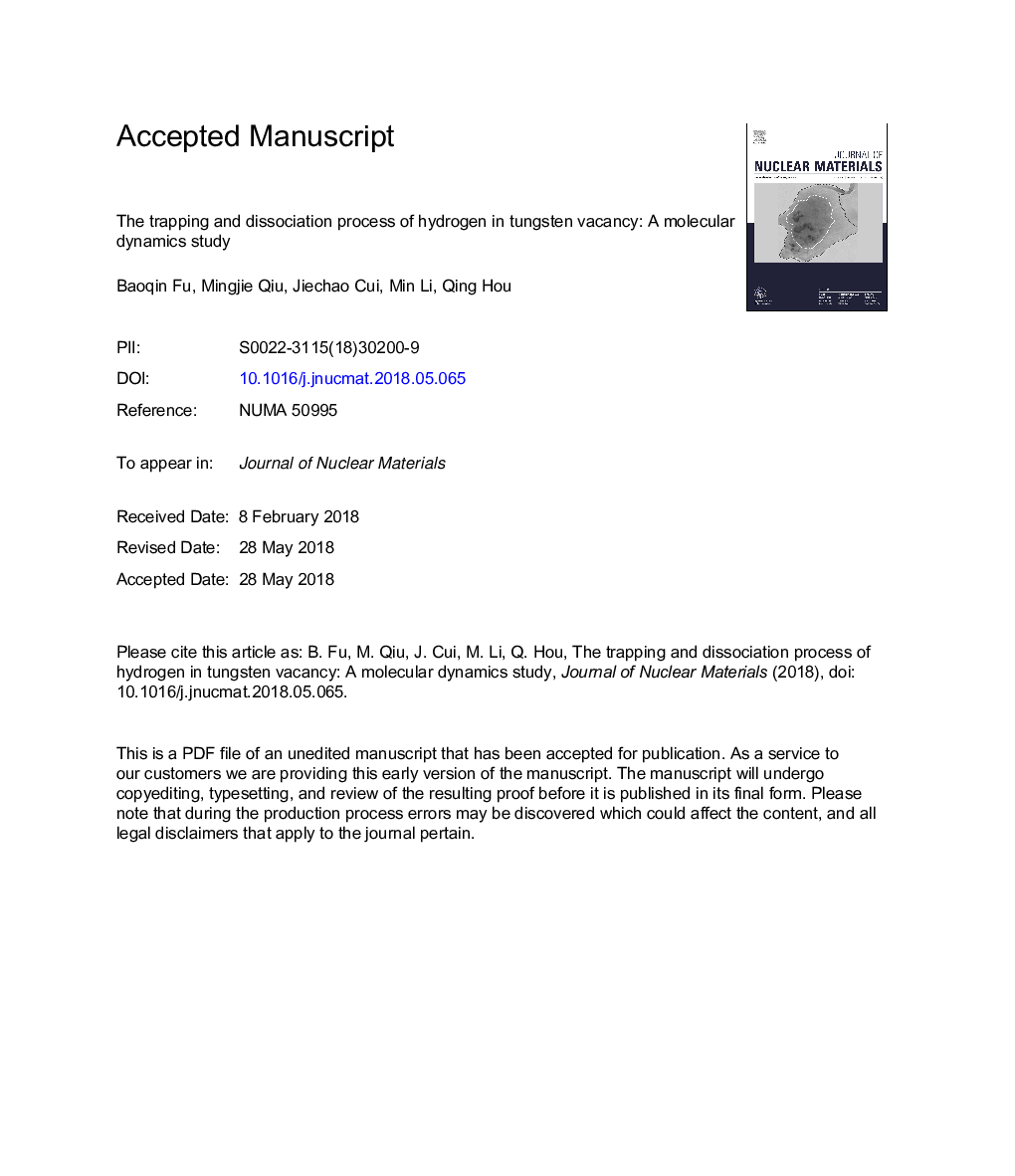| Article ID | Journal | Published Year | Pages | File Type |
|---|---|---|---|---|
| 7963069 | Journal of Nuclear Materials | 2018 | 34 Pages |
Abstract
Tungsten (W) is a primary candidate for plasma facing materials (PFM) for future fusion devices. The interaction between hydrogen (H) and vacancy (V) is the key for understanding many material behaviors under irradiation. Therefore, it is necessary to study carefully the kinetic process between H and W vacancy. In this work, the dynamical parameters, including effective capture radii (ECRs) and dissociation coefficients, for various trapping and dissociation processes (VHx + HâVHx+1), have been investigated using an ingenious method based on molecular dynamics (MD) simulations. It was found that the parameters are dependent not only on the reaction types but also on the temperatures. The ECRs decrease gradually as the increase of the trapped H atoms in the W vacancy, and decrease roughly with increasing temperature for Tâ¯<â¯1200â¯K. The dissociation energies decrease gradually as the increase of the trapped H atoms in the W vacancy. The evolution of concentration of the trapped H atoms in W vacancy was investigated by coupling the trapping process and dissociation process and using the dynamical parameters calculated by the MD simulations. The H retention in W obviously depends on the state of trapping sites and the temperatures. These results should be potentially applicable for the long-term simulation methods such as kinetic Monte Carlo (KMC) and rate theory (RT) models.
Related Topics
Physical Sciences and Engineering
Energy
Nuclear Energy and Engineering
Authors
Baoqin Fu, Mingjie Qiu, Jiechao Cui, Min Li, Qing Hou,
